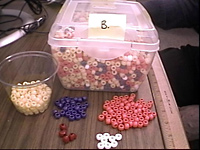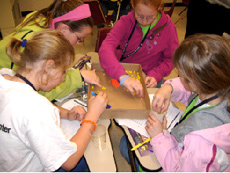| |
|
|
 |
| |
|
|
The large clear plastic container represents one Genesis collection wafer—yellow beads depicting atoms in the wafer and other colors representing embedded solar wind particles. |
What Are We Made of? The Sun, Earth, and You
By studying the chemical elements of the sun, we can learn about the essential building blocks for all that exists in the universe, including planets like Earth, and even the human body.
The Genesis Sample Return Mission provided a way for scientists to capture some of these vital elements and brought them back to Earth for analysis, including the separation of these elements from the particles found in the solar wind.
 |
|
In the extraction phase of the activity, students count the number of beads of each color in their cup for further analysis. |
|
The Genesis Mission has provided countless educational opportunities for students nationwide to gain a better understanding of these fundamental elements that make up the universe. By counting elements extracted from a simulated Genesis sample, students learn how the extraction of atoms from the Genesis samples help scientists have a better understanding of the abundance of elements from the solar wind.
Another exciting activity is for students to watch an interactive video explaining the process by which Genesis determined the relative abundance of elements in the solar wind. Students can then collect simulated data based on real Genesis findings to analyze the different percentages of elements within their samples. This activity is available on-line (please see links below).
+ What Are We Made Of? Teacher Guide (PDF, 268 k)
+ What Are We Made Of? Student Activity (PDF, 108 k)
+ Data Chart (XLS, 101k) (PDF, 27k) |
